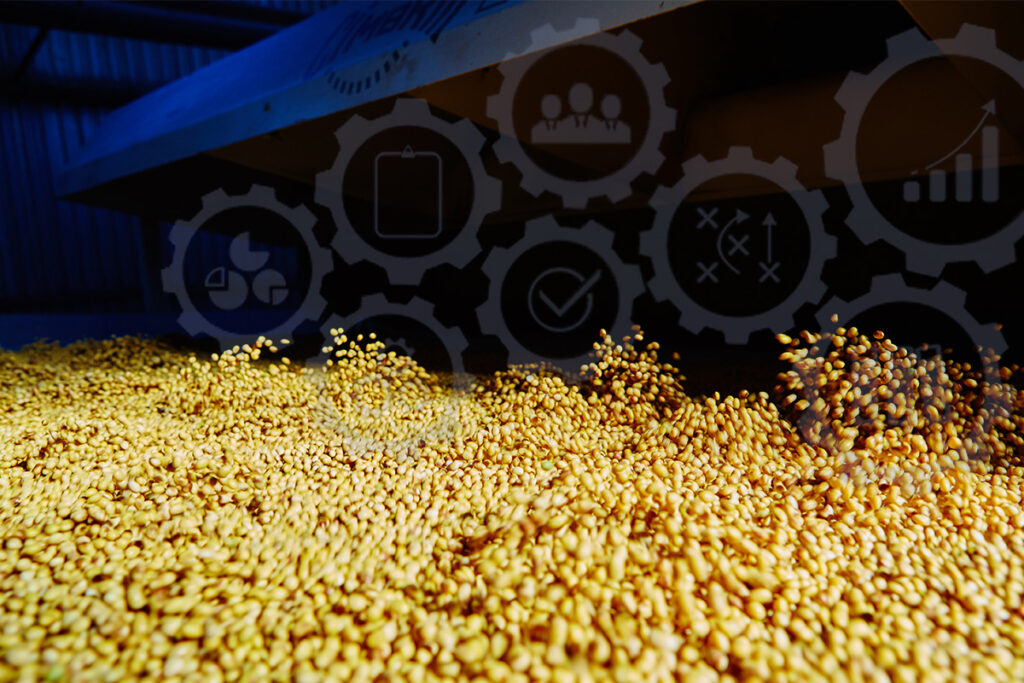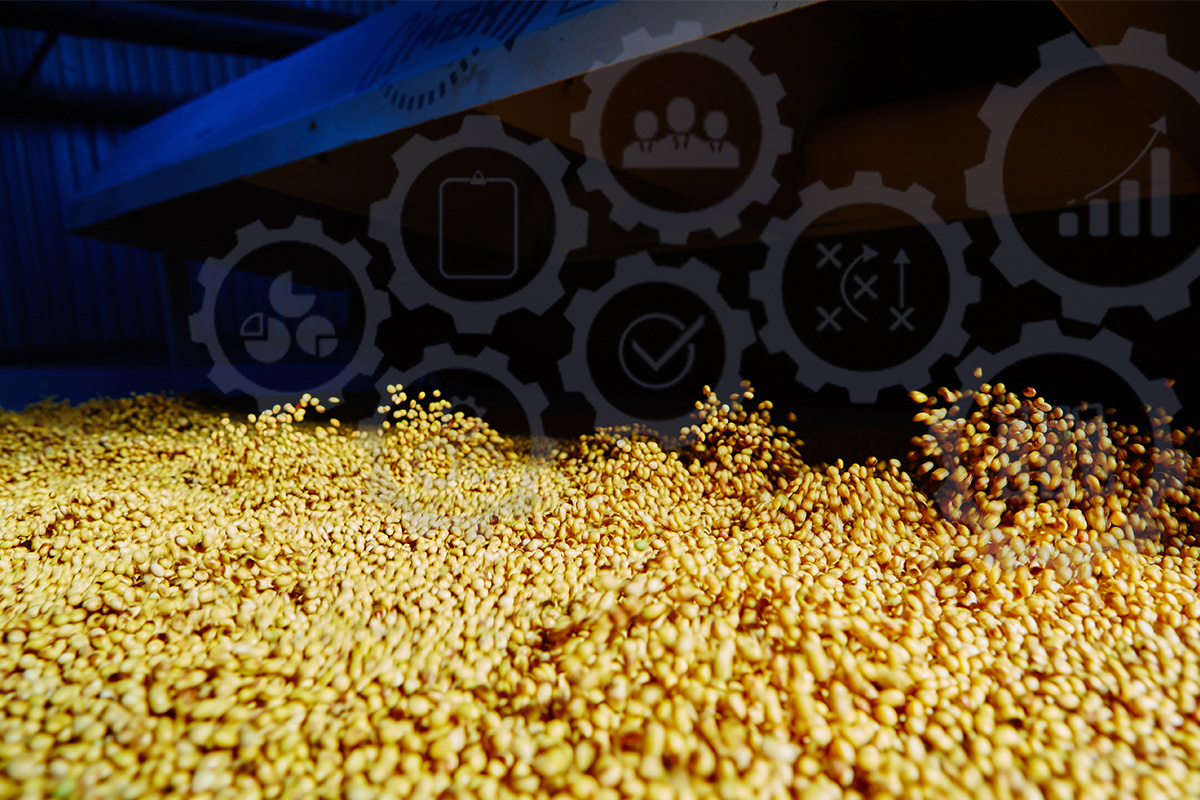
Inside a mechanical oilseed crushing plant, soybeans pass through dozens of complex industrial operations and machines on their way through the extraction process. Whether the facility is running a few dozen tons of seeds per day or hundreds, each processing step and piece of equipment must be able to operate in unison to keep products and profits flowing smoothly. By installing smart control systems throughout a plant, operators can manage this complicated chain of events as one connected system and unlock cutting-edge efficiencies through plant-wide oil mill automation.
Industrial control systems can measure, monitor, and manage all aspects of mechanical oilseed extraction, from the flow rate of raw beans moving through the plant to the temperature of the final product discharged from the other end. These controls continuously gather data from each process and machine to provide valuable insights for optimizing a plant’s performance.
In this blog, we’ll explore some of the most common control systems oilseed processors can implement as we examine the benefits of feed mill automation.
Common control systems in oilseed processing
While specific steps and machines may vary by seed type and facility, automated systems can help control and monitor several key processes in a mechanical extraction plant, such as:
- Material flow rate: Production capacity is one of the most important controls to measure in an oilseed processing plant because running machinery below its recommended volume can be inefficient and even detrimental to an operation over time. Instead of estimating production rates by eyeing grain levels in the storage silo, automated weigh devices help mills accurately measure volume in real time and adjust for fluctuations so that each machine can operate at peak capacity.
- Moisture content: Moisture is a critical factor in oilseed processing; material that’s too wet can easily clog extraction equipment, while beans that are too dry can quickly overheat, degrading the quality of the end products. Using moisture monitors to measure and precisely control these levels, processors can optimize process efficiency and product quality.
- Motor load: Measuring how much energy a motor consumes can tell a processor a lot about a machine’s performance over time. A sudden spike in amp load might indicate excessive strain. However, automated control systems can be programmed to sustain a certain motor load setpoint, maintain ideal energy efficiency, and even lower utility bills.
As oil mill automation systems continue to advance, operators have endless options to control every industrial process in their plant to maximize uptime and optimize extraction.
Benefits of feed mill automation
In traditional oilseed processing plants, operators relied on manual labor to monitor machines continuously and respond to issues after the fact. For example, if one machine malfunctioned, employees had to spring to action. They quickly shut down each piece of equipment in the proper order to avoid triggering an avalanche of equipment failures beyond the initial issue. But thanks to modern oil mill automation, the simple push of a single button can safely shut down an entire facility so that the staff can quickly fix minor issues before they become significant problems.
Automated control systems can bring dozens of complex industrial processes into one cohesive, unified operation that’s easier to manage than several separate interdependent machines. By centralizing the control of all these processing steps into a streamlined system, operators can unlock benefits, such as:
- Improved efficiency and productivity
- Enhanced safety
- Maximized equipment uptime
- Reduced maintenance costs
- Scalability and flexibility to adapt
Automated controls can be invaluable tools to keep products and profits flowing in an oilseed processing plant. Keeping every single process running smoothly requires a deep understanding of the nuances involved in mechanical oil extraction. With more than 130 years of experience processing more than 80 different seed types for hundreds of facilities around the globe, Anderson International has the expertise and equipment to help processors optimize these systems to take full advantage of oil mill automation controls.
To learn more about the costs and benefits of oil mill automation, download Anderson’s guide to control systems.

